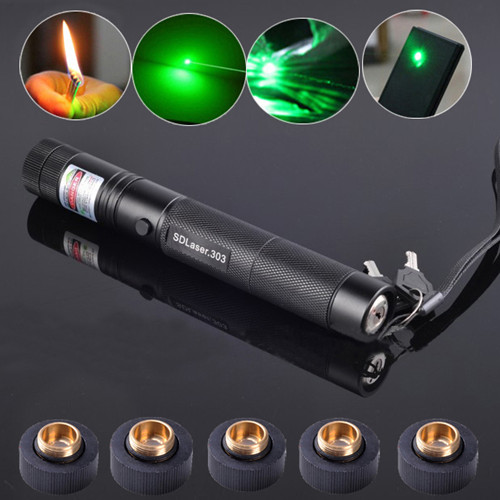The antimonide inter-band cascade laser is a new semiconductor laser based on quantum effect and energy band engineering. It was first proposed by Professor Yang Ruiqing. It realizes the radiative recombination of electrons and holes through the transition between the conduction band and the valence band. Each active region Connected in series by a similar quantum cascade structure. It combines the advantages of traditional semiconductor inter-band transition lasers and quantum cascade laser pointer based on inter-sub-band transitions, such as uniform carrier injection, high quantum efficiency, easy wavelength adjustment, threshold current density, and low power consumption.
Therefore, the antimonide inter-band cascade laser has important application prospects in the fields of environmental monitoring, medical diagnosis, and information collection in the Internet of Things. However, its complex structure and large number of epitaxial layers make it difficult to grow its materials. The research team of Ma Wenquan, the Key Laboratory of Semiconductor Materials Science of the Institute of Semiconductors, has cooperated with the research group of Professor Yang Ruiqing of the University of Oklahoma, USA, using the structure designed by Professor Yang Ruiqing, and using molecular beam epitaxy growth technology to solve the narrow growth window and multi-layer of antimonide materials. Structural strain and interface control problems have successfully developed a cascade laser between antimonide bands.
The device realizes continuous lasing from 78 K to 169 K, the maximum temperature of pulsed lasing reaches 249 K; at 78 K, the corresponding lasing wavelength is 4.27 microns, and the threshold current density is less than 70 A/cm2; at 169 K, the corresponding The lasing wavelength is 4.63 microns, and the threshold current density is about 306 A/cm2. The X-ray double crystal diffraction spectrum of the laser material and the lasing spectrum of the laser at 78 K. I believe that through hard work performance will have more breakthroughs.
Germany develops new processes to improve the quality of laser 3D printing precious metals. The German Institute of Precious Metals and Metal Chemistry recently developed a new method that can significantly improve the quality of 3D printed gold by selective laser melting technology. This method can provide more design flexibility for 3D printed jewelry, watches, and even electronic products that use gold as a conductor. The technology can now easily print titanium, aluminum or steel alloys, but it is still “not very good” at dealing with precious metals such as gold, silver and their alloys. This is mainly because such metals have high reflectivity and thermal conductivity. However, the FEM Institute has found an effective solution by mixing these precious metals with other metals to form alloys. However, this type of metal must meet certain conditions, such as suitable hardness, and will not significantly change the color of gold after mixing.
In the experiment, the researchers tried to mix gold with iron and germanium. Through multiple tests, they found that Ge001 and Fe003 are the most suitable, because the iron and germanium in these two alloys are oxidized, which can reduce the reflectance of the alloy. It is worth mentioning that the 3D printer they use is. In addition, the researchers also obtained the best printing parameters for these two alloys: · Best powder size: 5-30 microns · Best laser speed: 200-450 mm/sec · Reduced porosity by heat treatment: 3- 4%-0.7% Although now, green laser pointer sintering 3D printers that can directly print precious metals and have better quality have appeared, this research by the FEM Institute is still a feasible solution. I believe that as long as it can be commercialized eventually, it will definitely accelerate the transformation of the application of 3D printing technology in the jewelry industry.

